FighterJock
ACCESS: Above Top Secret
- Joined
- 29 October 2007
- Messages
- 5,425
- Reaction score
- 5,562
Remember Lockheed's Sea Shadow anyone? That had the same issue.
I think they've simply shaped it to give their flat panels the best lignment and line of sight they can.combined response
Interesting, that island looks like they're trying to do some Zumwalt-level LO shaping...
How do you stealth a carrier?
So you shape it to have some specular reflections, say roughly Sea State 4 or 5, and otherwise reduce the RCS to that of an empty piece of ocean. Bonus points if your engineers can manipulate the reflection lobes to be moving.Realistically, if a carrier's RCS was reduced to that of say, a B-2, you would then have a carrier-sized "dead spot" in a sea of specular reflections - an exploitable phenomenon.
No anger from me! SSCVNs would be fascinating to build, if absolutely ginormous. I'd guesstimate 500,000 tons for something the capabilities of a Ford/Nimitz. Hence my crack about calling one Leviathan, and in general them being the Kaiju (giant monster) class.Not understanding the anger here...the response was meant as a quip with a truism behind it. To reiterate (as meant):
"How do you stealth a carrier?"
quip - "Sink it."
Realistically, if a carrier's RCS was reduced to that of say, a B-2, you would then have a carrier-sized "dead spot" in a sea of specular reflections - an exploitable phenomenon.
Very good artwork. These clouds look very chinese painting style clouds.


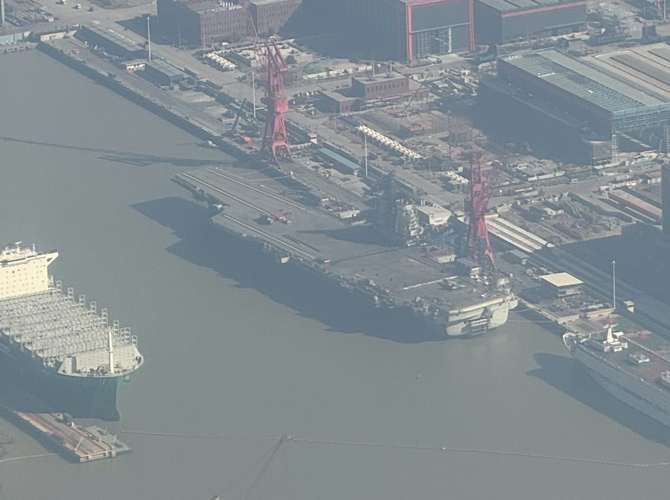
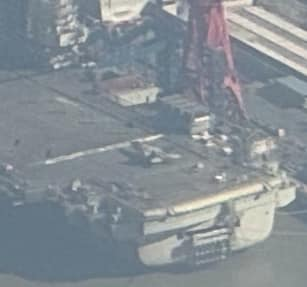
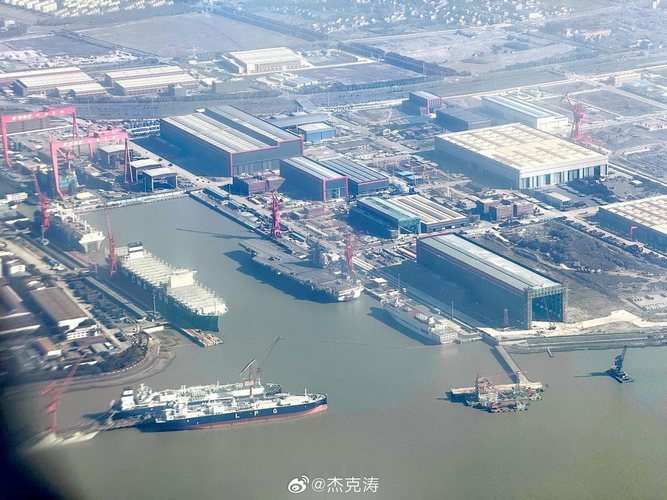
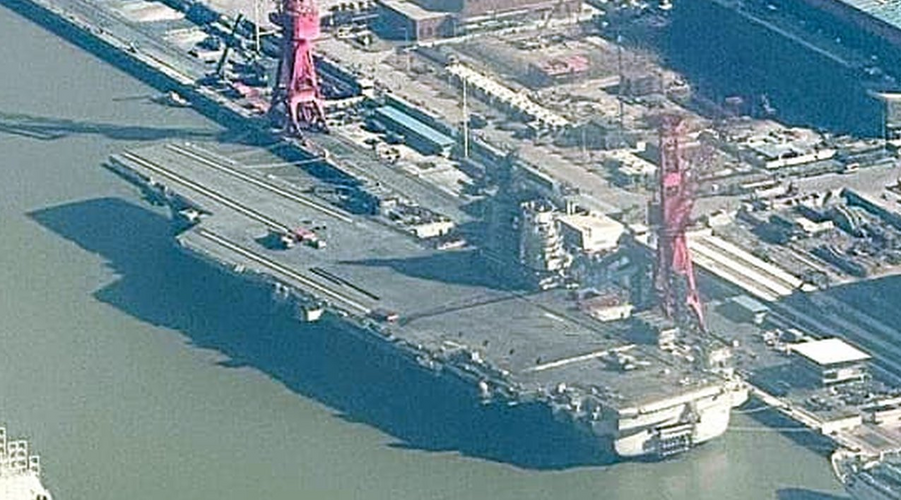
Something I never really appreciated before; they went with a much more centrally located island than even the Nimitz class.
which is interesting since the French went with an island that's located quite a bit forward on the CdG
while the latest US carriers and the new French proposal are located quite far back.
then you have the Brits, the Italians and potentially the Koreans going twin
The Nimitz class had a slight (1.5°) permanent list to starboard in neutral trim - they just counter-ballasted with a little port bilge flooding and went on their way.I suppose in the case of the PLAN, the Kuznetsov design set them up for this layout. There might be training issues with having carriers with completely different flight ops orientations. Or alternatively it was seen as a lower risk from a topside balance perspective as opposed to going with an all new layout. I think the early Nimitz class had some balance/ballast issues with laid back island and Midway’s stability never recovered from her modernization.
From what other posters have said here, that hasn't been fixed. Every Nimitz just has about 5000 tons of ballast water on the port sideto level the flight deck.The Nimitz class had a slight (1.5°) permanent list to starboard in neutral trim - they just counter-ballasted with a little port bilge flooding and went on their way.
I'm not sure they bothered to fix that even when building the later ones.
So it might possibly be that the PLAN did not think that moving the CoG of the ship around was worth the effort. I think people underestimate how hard it is to create warships of this size and in particular create a balanced ship with an angled deck and offset island. This is not an easy piece of engineering for even the most modern navies.From what other posters have said here, that hasn't been fixed. Every Nimitz just has about 5000 tons of ballast water on the port sideto level the flight deck.





Makes sense, having integrated sensor masts aids productivity, while also helping to lower the overall radar footprint of the ship. Only possible downside that I see is that the ship will have one point of failure for all sensors, instead of having them more spread out, but even on US CVNs, the sensors are relatively compacted together on the island roof. The British seem to have the right idea with the distributed island setup their QE2s have.
Why antennas will go almost unseen on China’s next-generation warships
Scientists have revealed details of the Fujian’s ‘all in one’ mast – technology they say will have a big impact on warfare in the future.www.scmp.com

So, at this moment, the work on deck is completed ?As it seems, this is one of the clearest recent images of the PLANS-18 „Fujian“ after being in the water again since 14th February.
View attachment 720334
View attachment 720337

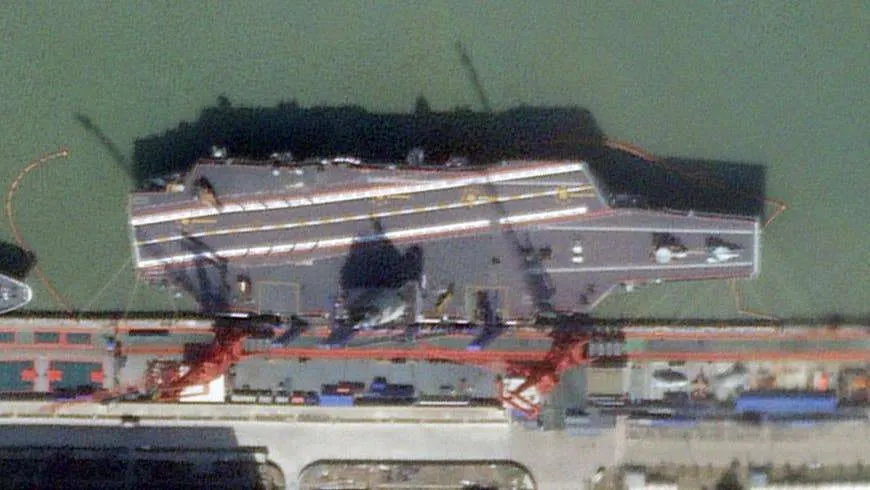
It would be interesting regarding what their onboard aircraft maintenance capabilities are as compared to our CVN AIMDs?
For our US carriers, all aircraft "I-Level" component maintenance spaces for example and in fact all spaces are identified and established during the design phase, you can't allocate critical spaces after the ship has been built and determine who or what goes where. Shakedown has nothing to do this.
In 1985-87 I spent a lot of time (364 days away from home port wandering the northeast Pacific and the Southwest Pacific and Indian Oceans) aboard a US aircraft carrier (CV-61 Ranger) that had been built in the 1950s (Aug 1954 - Aug 1957).For our US carriers, all aircraft "I-Level" component maintenance spaces for example and in fact all spaces are identified and established during the design phase, you can't allocate critical spaces after the ship has been built and determine who or what goes where. Shakedown has nothing to do this.
I am referring to the "basic" aviation maintenance space allocation of a "new" designed ship, I was assigned to CVN-65 from 80 - 85 and ran the AIMD hydraulic shop. I am aware of space mods/changes based upon the evolution of the various aircraft types to be supported over time especially in the areas of avionics shops. When I visited CVN-65 in 2012 during the inactivation, the hydro shop was basically same except for test bench/equipment, work bench, tool/fixturing storage improvements and the way it was organized but it occupied the same amount of space. I was curious of how the Chinese would approach this, probably will copy us more than likely.In 1985-87 I spent a lot of time (364 days away from home port wandering the northeast Pacific and the Southwest Pacific and Indian Oceans) aboard a US aircraft carrier (CV-61 Ranger) that had been built in the 1950s (Aug 1954 - Aug 1957).
When she was built she was designed for FJ Fury (navalized F-86), F3D Demon, F4D Skyrays, F11F Tigers, and F9F Cougars, A4D Skyhawks, A3D Skywarriors, AD Skyraiders, and Grumman S2F Trackers - and assorted helos.
Later she operated F-8 Crusaders, F-4 Phantoms, A-7 Corsair IIs, A-6A Intruders, A-5 Vigilantes, E-1 Tracers, and so on.
By the time I was aboard she was operating F-14 Tomcats, A-6E Intruders, EA-6B Prowlers, S-3 Vikings, E-2C Hawkeyes, and SH-3Gs.
The aircraft had 5-10 times the electronics of those she was built for, and the space for the repair shops were all over the ship... wherever they could find room. The radial engine shops were gone, and so on.
My avionics shop (and the test equipment calibration center, and the F-14 TARPS recon pod camera repair shop) were in what used to be (when Ranger commissioned) a bomb assembly area - we used ordnance elevators and the remaining overhead hoist rail tracks to move the larger of our equipment around the way bombs used to be moved around in there.
Yes, you design in what is needed for the air wing existing at commissioning... but the truth remains - you can plan and design all you want, but sooner or later (always sooner) you have to start repurposing spaces as needs change with changes in aircraft, the systems in those aircraft, the systems in the ship, and so on.
And sometimes what you thought would work in one place and one way, just doesn't, and things have to be changed immediately after full trials have ended.
